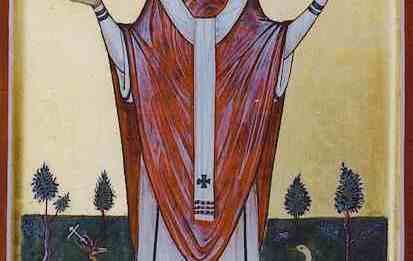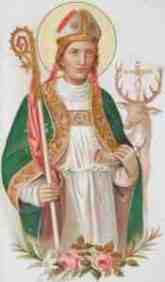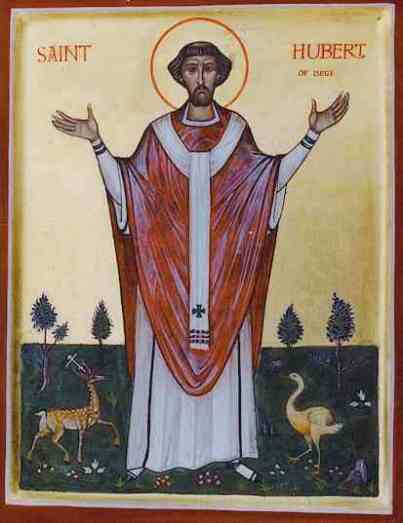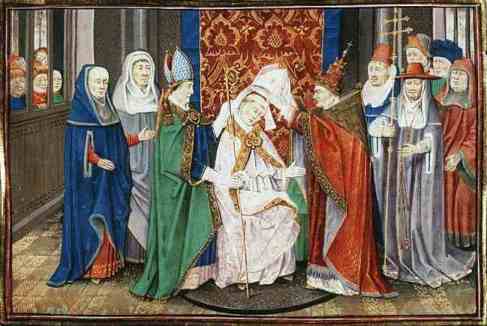UNTIL NEXT YEAR…
Well, the Final Draw certainly gave us some intriguing groups, but which is worthy of the so-called ‘Group of Death’? Stay tuned to themessenger107.wordpress.com over the next few hours and days for the best reaction to the events today in Costa do Sauipe – and also for the best in terms the build-up to Brazil 2014. Who will wrest the Trophy from Spain’s grasp?

lets analyze these groups and have a glimpse of what would be seen in Brazil from the 12th of june to the final on the 13th of july.

GROUP H HEAD-TO-HEAD
Belgium and Korea Republic both have previous World Cup experience of each other, with Belgium winning the first encounter before a draw in 1998. Both coaches Marc Wilmots and Hong Myung-Bo were in the sides for their 1-1 draw in group climax Paris, which will be repeated in Sao Paulo this time.
Belgium have also faced Russia four times in the finals, with the first two games going the way of the then-USSR, and the latter going to Belgium. They met at their last World Cup in 2002 as well, with a 2-0 win for the Red Devils.
Algeria have faced all three of their opponents in friendlies over the years, earning a draw against Russia and Belgium, but also suffering defeats to the latter and Korea Republic.
GROUP G HEAD-TO-HEAD
Germany have faced Portugal 17 times, five of those meetings have been at a World Cup. At Germany 2006, the hosts bested Portugal 3-1 in the match for third place.
Ghana beat USA in the two most recent World Cups. The Black Stars bested the Stars and Stripes 2-1 in the final group stage match of Group E at Germany 2006 and again beat the Americans in the Round of 16 at South Africa 2010 when Asamoah Gyan fired Ghana through to the quarter-finals with a 93rd-minute extra-time goal.
Germany and Ghana met in the 2010 World Cup, where half-brothers Kevin-Prince and Jerome Boateng battled against each other in the first time family members played against one another at a World Cup.
USA and Portugal met at Korea/Japan 2002 where the Americans pulled off a shock 3-2 defeat of the European side. USA met Germany in the quarter-finals of the same tournament where Germany edged the Americans 1-0.
Portugal and Ghana have never faced each other.
GROUP F HEAD-TO-HEAD
Argentina and Bosnia–Herzegovina have met twice before, most recently in St. Louis, USA this past November when Argentina won 2-0 in a friendly. Iran and Nigeria have met just once before in Hong Kong in 1998 where the Super Eagles came out on top 1-0.
Bosnia-Herzegovina and Iran have met five times before and the Iranians have got the better of the Brazil 2014 newcomers by winning four and drawing once.
Argentina and Nigeria have faced off in six matches, including the 2010 World Cup, when Argentina won 1-0 at in Johannesburg. In total, Argentina have won five and drawn once.
GROUP E HEAD-TO-HEAD
Two matches will happen for the first time at the 2014 World Cup, Switzerland have never faced Ecuador before, and France have not played Honduras at senior level.
France and Switzerland on the other hand, have played each other 36 times, once at the World Cup, a goalless draw in the 2006 group stages.
Honduras and Ecuador have met each other 13 times – all friendly matches, with eight draws. Honduras have faced Switzerland once, at the 2010 World Cup, which ended in a goalless draw. Ecuador and France‘s only meeting came in a 2-0 friendly win for Le Bleus.
GROUP D HEAD-TO-HEAD
England have faced Italy 24 times, with a 2-1 win for Gli Azzurri at Italy 1990. Their most recent meeting came in EURO 2012, with the Italians putting England out on penalties. The Three Lions have faced Uruguay twice at the World Cup, a win for La Celeste in 1954 and a goalless draw in 1966, when the hosts went on to secure their only World Cup to date. England have never before faced Costa Rica, who in turn have only met Italy once – a friendly win for the Azzurri in 1994.
Italy and Uruguay have faced off twice at the World Cup before, a draw at 1970 and a 2-0 win for the hosts at Italy 1990.
Uruguay and Costa Rica have met eight times, with the latter never having won. La Celeste saw off Costa Rica in the 2010 World Cup qualifiying play-off – 2-1 on aggregate.
GROUP C HEAD-TO-HEAD
Colombia and Greece have met once before, a friendly win for the Colombians in 1994.
Côte d’Ivoire and Japan will face off for the first time in a competitive match on 14 June, with Japan winning two out of their previous three friendly meetings. Côte d’Ivoire have never before faced Colombia or Greece.
Japan beat Greece in their only ever meeting, at the 2005 Confederations Cup.
Japan have not beaten Colombia in their two meetings to date, a 2003 Confederations Cup win for the South Americans and a goalless friendly draw in 2007.

GROUP B HEAD-TO-HEAD
Spain and Netherlands open their World Cup campaigns after playing their most recent World Cup fixture against one another – the 2010 Final. That has been their only World Cup game in ten meetings. Australia and Chile have met four times, once at the 1974 World Cup, which ended in a goalless draw. The holders have met Chile ten times before and twice at the World Cup (both wins for La Roja, 2-0 in 1950 and 2-1 in 2010).
The Netherlands have failed to beat Australia in their three friendly meetings, drawing twice and losing in 2008. The Socceroos have never faced La Roja and the Netherlands have faced Chile just once – a 2-2 draw in the 1928 Olympic Football Tournament.
GROUP A HEAD-TO-HEAD
Brazil have faced Mexico a remarkable 38 times at senior level, three times at a World Cup finals (1950, 1954 & 1962), with Brazil victorious on all three occasions. The hosts have played Croatia twice before, one friendly draw and a victory over the Croats in the group stages of the 2006 World Cup. A Selecao beat Cameroon in the 1994 World Cup, but lost in their most recent meeting – at the 2003 FIFA Confederations Cup.
Mexico and Cameroon have met just once before, a win for El Tri in a 1993 friendly match. Mexico have played Croatia three times before, winning their only World Cup meeting in 2002. Cameroon and Croatia will meet for the first time on 18 June in Manaus.
Reactions of Coaches
Some Coaches expressed how they feel about the draw and also gave us some tips on what to expect from their teams and the competition.
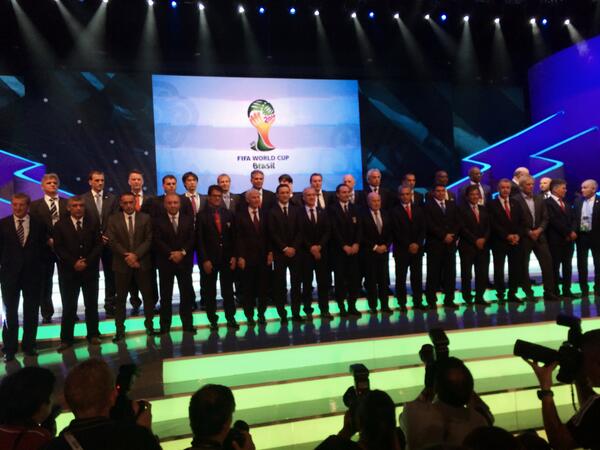
All 32 coaches onstage after the draw in Brazil.
STEPHEN KESHI VIDEO REACTION
“We keep playing Argentina at the World Cup! We’ll see how it goes this time.”

VAN GAAL ON POTENTIAL ROUND OF 16 GAME
“You obviously expect to progress and we will then meet a team from Brazil’s group [A Selecao, Mexico, Croatia and Cameroon]. We might meet Brazil in the next round, so it’s not the best of draws from a Dutch perspective.”says Van Gaal, the head coach of the Netherlands soccer team.

VAN GAAL ON GROUP B
“You can’t really do anything about it, but it’s fair to say that it’s not a good draw for us. We will play the reigning world champions, Australia, whom we have never beaten, and Chile. I saw them play against Colombia when they went 3-0 up and showed that they are a good team. If we look at our opponents, it sure is a difficult draw.”

ANGE POSTECOGLOU REACTION
“This is the World Cup. It’s the best football nations on the planet and we will embrace the challenge that lies ahead of us. We will see some great football played in our group and it’s up to us to play a part in that. We wanted to play some big nations. We want to test ourselves against the best nations on the biggest stage” says Ange Postecoglou, the Head coach of the Australian national association football team.

VAHID HALILHODZIC REACTION
“We could have had a much more difficult group but there’s no easy group or no group of death. Belgium is a big football nation with lot of quality. In my opinion, it could well be one of the surprise of the tournament. I also know Russia well, who have a great coach. Korea Republic is also very skilful, lots of passing, movement. This team have a few good players. It’s a very complicated group. We’ll come to try and surprise. We won’t come as tourists, but it will be very difficult.” Says Vahid Halilhodzic, the head coach of the Algerian national football team

LUIS SUAREZ’S (HONDURAS COACH) REACTION
“I leave with good taste in my mouth, with one exception: I didn’t want to face Ecuador. Not only for Reinaldo (Rueda, coach of Ecuador), but also for the country: they mean a lot to me. Ecuador helped me to develop my career, I owe them many things. But anyway, draws are like that. We’ll try to face this situation as real professionals. We want to reach the Round of 16.”
JOACHIM’S REACTION
“Jurgen and I have had a very good and close relationship for a long time. We have always exchanged ideas on a regular basis, but that will certainly change before the World Cup match.”says the head coach of the German national team.
LUIS FILIPE SCOLARI’S REACTION
“I am satisfied with the draw. But we shall be paying close attention to the opening phase. I am not concerned with the second phase.”says the head coach of the Brazilian national team
CESARE PRANDELLI’S REACTION
“We don’t have to be angry because of the draw; we’re at the World Cup and must be happy.”says the Italy head coach.
ALBERTO ZACCHERONI’S REACTION
“It’s important that we start well. Ivory Coast players will be familiar with the hot weather; we have to adapt.”says the head coach of the Japanese national team.
VOLKER FINKE’S REACTION
“I think Mexico, Croatia and Cameroon are level. One of those teams will accompany Brazil.” says the Cameroon head coach.


